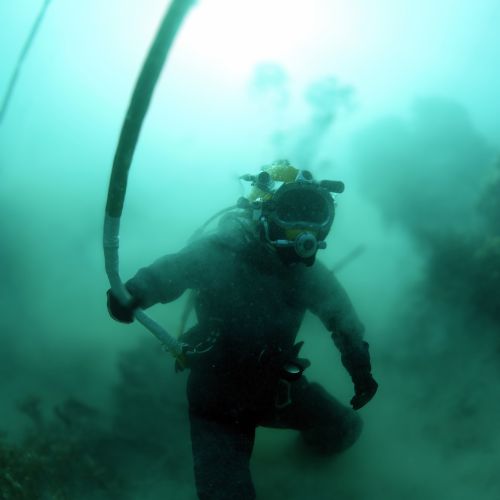Diver Lines (Marking & Securing)
Lines are to be marked every 15 meters from the datum by one red band for every multiple of 15 meters, e.g. 45-meter mark would have three red bands. In addition, each 15-meter length is marked at each intermediate 3 meters by a yellow band for every multiple of 3 meters plus the suitable number of red bands, e.g. the 12-meter mark would have four yellow bands and the 36-meter mark would have two red bands, and two yellow bands.
In addition, lines to be used by divers breathing oxygen are to be marked at the 6-meter mark with a single white band. The lines are to be marked using turns of colored adhesive tape. Rope, whether MMF or natural is to be marked by weaving the plastic tape through the strands and then taking two complete turns around the rope. Lines are to be marked throughout their entire length. Markings are to be checked against a tape measure annually. The tapes are to be so applied that the lower one, or first tape of a numerical combination to enter the water, is at the depth to which that combination refers.
Umbilical markings require a black adhesive tape background to be fitted before the depth markings being positioned. The second karabiner from the diver’s end is to be used as the datum mark.
Securing Lines: When diving in self-contained breathing apparatus, the line secured to the diver, or on a secure point on the diving equipment, whether it be a lifeline, safety line, or buddy line, is to be so fastened that the breathing apparatus can be ditched without being fouled by the line.
Lines are to be secured to ensure they are easily detachable. Care should be taken to ensure that the datum mark is positioned at the diver’s shoulder. Lines may be secured by using a bowline knot or by use of a gated karabiner.
Conclusion:
Marking codes and secure fastening of diver lines are crucial for safety, control and prevention of entanglement during divers.


